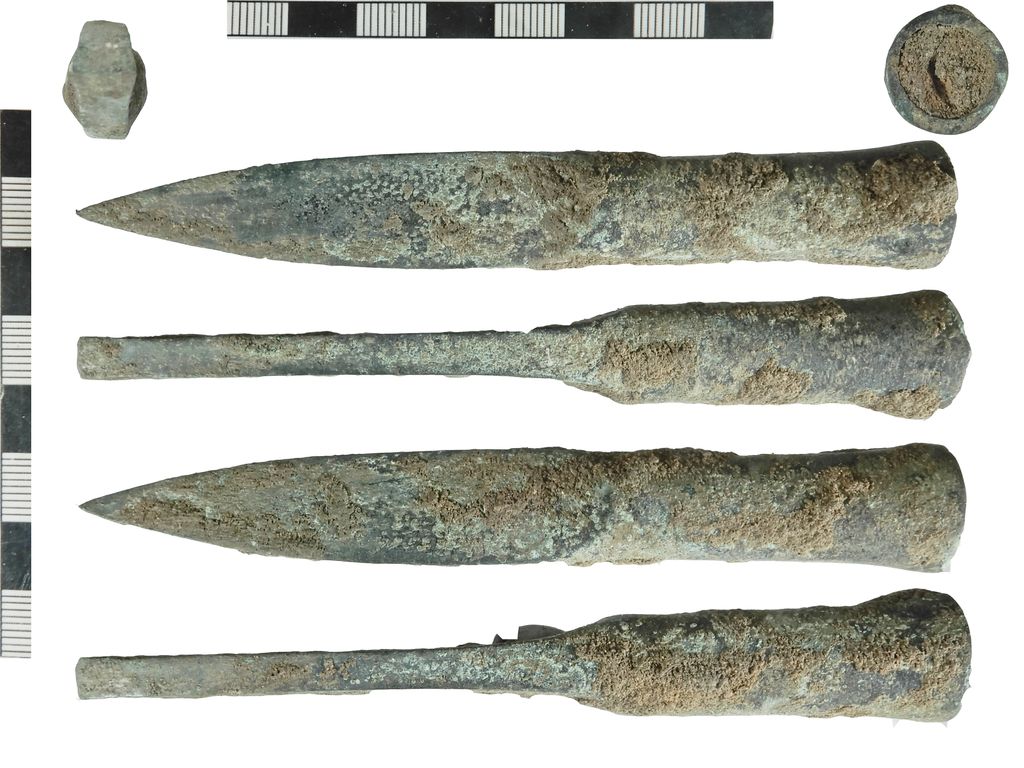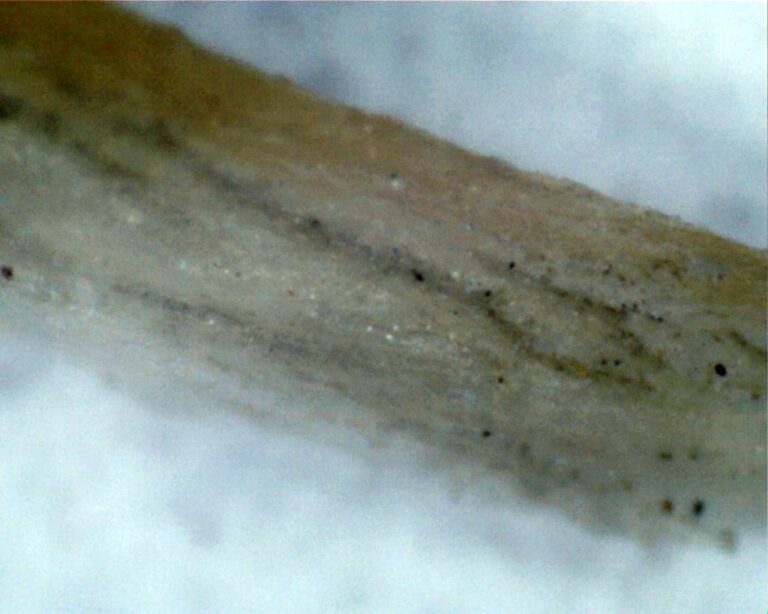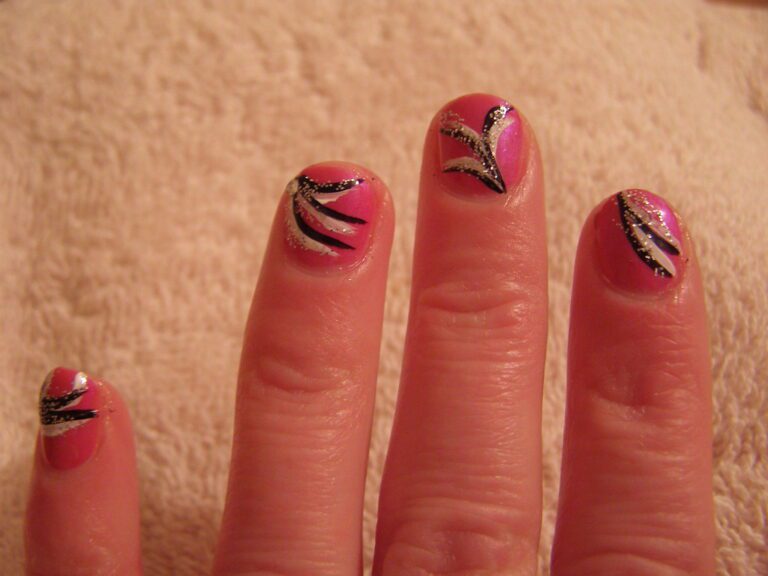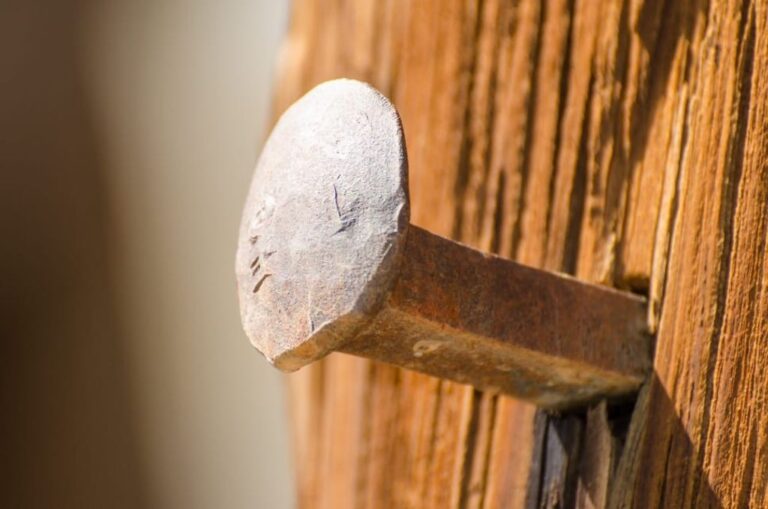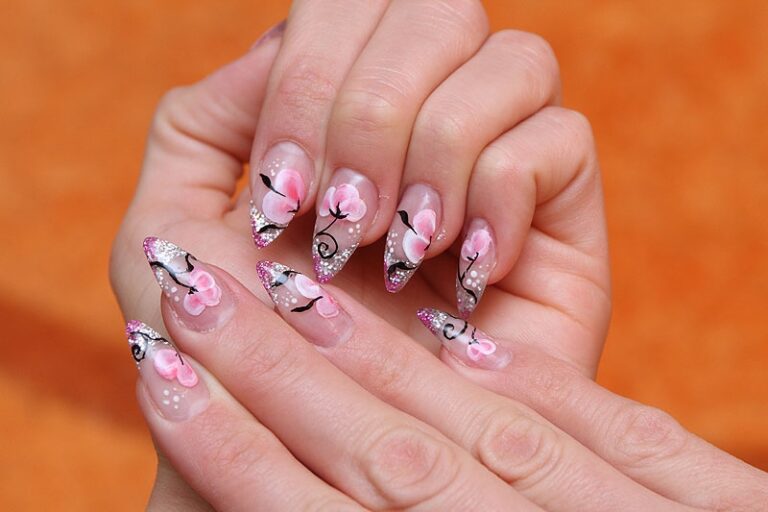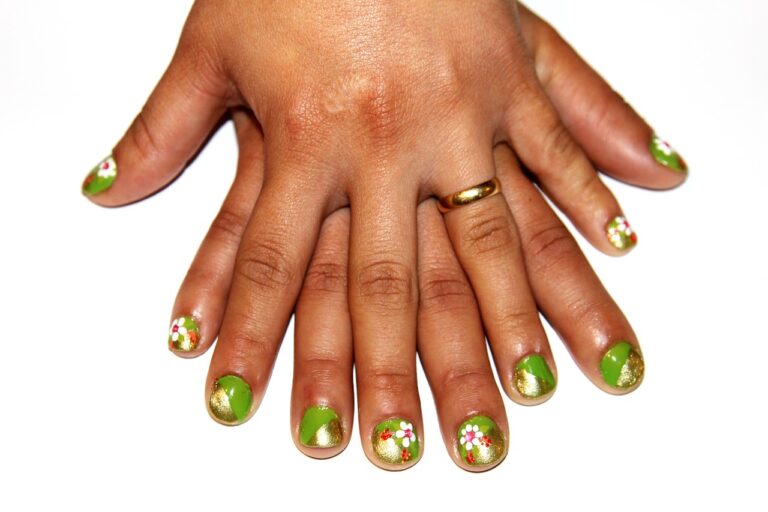“Nail Origins: When Were Nails Invented?”
The history of nails dates back to ancient civilizations, where they played a crucial role in construction, woodworking, and cultural symbolism. From the early evidence of nail use to the modern applications of nails, the evolution of nail manufacturing has been a testament to technological progress and economic impact. This article delves into the origins of nails, tracing their significance and influence through the ages.
Key Takeaways
- Nails have been used since ancient times, serving as essential fasteners in construction and woodworking.
- The evolution of nail manufacturing from hand-forging to machine production reflects advancements in technology and industrialization.
- Different types of nails have been used throughout history, each with unique designs and applications.
- Nails not only played a practical role in construction but also held cultural and symbolic significance in ancient societies.
- The production and trade of nails have had a significant impact on the economy and technological progress throughout history.
The Dawn of Fasteners: Tracing Back to Ancient Civilizations

Early Evidence of Nail Use
The earliest known use of nails dates back to ancient civilizations, where they served not only as practical fasteners but also as items of trade and craftsmanship. The discovery of bronze nails at archaeological sites indicates their use over 5,000 years ago, suggesting that nails were among the first forms of hardware to be utilized by humans.
Bronze was not the only material used; as civilizations advanced, so did the variety of materials for nail production, including iron, which became prevalent due to its strength and availability. Nails were crafted by hand, a labor-intensive process that involved heating, hammering, and shaping the metal.
The use of nails in construction and woodworking was a significant advancement in building techniques, allowing for more complex and durable structures.
While the primary function of nails has remained consistent, their design and manufacturing methods have evolved significantly over millennia. The early evidence of nail use is not only a testament to human ingenuity but also provides insight into the technological capabilities of ancient societies.
Materials and Methods in Antiquity
In ancient times, the creation of nails was a labor-intensive process that required both skill and patience. Blacksmiths were the artisans responsible for nail production, using bronze, iron, and sometimes silver or gold. These metals were chosen for their durability and, in some cases, their symbolic value.
The method of making nails began with heating the metal until it was malleable. The blacksmith would then hammer the heated metal on an anvil to form the nail’s shape. This was followed by cutting the nail to the desired length and creating a point by tapering one end. The other end was often fashioned into a head, which helped to secure the nail when driven into wood or other materials.
Consistency in nail size and shape was difficult to achieve, as each nail was hand-forged. This resulted in unique characteristics for nails from different periods and regions, which can now serve as valuable indicators of age and origin for historians and archaeologists.
Remember: The quality of ancient nails was largely dependent on the skill of the blacksmith and the purity of the metal used.
Cultural Significance of Nails in Ancient Societies
Nails held a symbolic importance in ancient societies, representing craftsmanship, social status, and cultural identity. The use of nails in construction and woodworking was a reflection of the community’s collective effort and skill. Additionally, the presence of nails in historical structures served as a testament to the technological prowess of the era. Their significance extended beyond mere fasteners, embodying the values and aspirations of the civilization. The economic impact of nail production was evident in the trade and commerce of the time, influencing the growth and prosperity of ancient societies. Nails were not just utilitarian objects; they were a manifestation of the cultural and economic fabric of ancient civilizations.
The Evolution of Nail Manufacturing

From Hand-Forging to Machine Production
The transition from hand-forging to machine production marked a significant turning point in the history of nail manufacturing. Prior to the advent of machines, blacksmiths would laboriously create nails one at a time, a process that was both time-consuming and skill-intensive. With the introduction of nail-cutting machines in the late 18th century, the production of nails was revolutionized.
These early machines were capable of producing nails at an unprecedented rate, greatly reducing the cost and making them more accessible for widespread use. The impact of this innovation was profound, as it not only increased efficiency but also allowed for more uniform quality in nail production. Here is a brief overview of the changes brought by machine production:
- Increased production speed
- Consistency in nail size and shape
- Lower manufacturing costs
- Enhanced availability for various construction projects
Tip: When examining antique furniture or buildings, the presence of hand-forged nails can be a clue to the age of the construction, as machine-produced nails became prevalent in the 19th century.
The Industrial Revolution and Nail Making
During the Industrial Revolution, the process of nail making underwent a significant transformation. Machine production replaced the traditional hand-forging method, leading to a substantial increase in nail production capacity. This shift revolutionized the nail industry, making nails more accessible and affordable for widespread use in construction and woodworking. The transition to machine production also marked the beginning of standardized nail sizes and shapes, streamlining the manufacturing process and enhancing the quality of nails.
Innovations in Nail Technology
The advancements in nail technology have been pivotal in transforming the industry. With the introduction of automated nail-making machines, the production process became significantly more efficient and cost-effective. These machines allowed for the mass production of nails with consistent quality and uniformity.
Innovation didn’t stop at production; the materials used in nails have also evolved. Modern nails are often made from a variety of metals and alloys, providing enhanced strength and resistance to corrosion. Additionally, the development of non-toxic and environmentally friendly materials has become a priority, reflecting a shift towards sustainability in the industry.
Here are some key milestones in nail technology:
- Introduction of wire nails in the late 19th century
- Development of electroplating techniques for rust resistance
- Emergence of pneumatic nail guns in the 1950s
- Advancements in adhesive and coated nail options
Remember, the choice of nail technology can greatly influence the integrity and longevity of a construction project or a simple household repair.
Types of Nails Through the Ages

Variations in Ancient Nail Designs
The ancient world showcased a remarkable variety of nail designs, each tailored to the needs and resources of the civilization that crafted them. From the simple bronze nails of the Egyptians to the iron spikes of the Romans, the diversity in form and function is a testament to human ingenuity.
Iron was a favored material for its strength and availability, but other metals like bronze and silver were also used, often reflecting the wealth or status of the user. In some cultures, nails were not merely functional but also held decorative value, with intricate designs indicating a higher social standing.
- Bronze Clavus: Used in furniture and sacred spaces.
- Iron Stilus: Common in construction, particularly in military fortifications.
- Silver Speculum: A symbol of affluence, occasionally found in tombs.
Remember, the size and shape of a nail could also signify its intended use, from the delicate tasks of securing jewelry to the robust demands of shipbuilding.
Medieval Nails and Their Uses
During the medieval period, nails were not merely fasteners but also held significant value in construction and craftsmanship. The blacksmiths of the time were skilled artisans who created nails that were as functional as they were decorative. Each nail was hand-forged, making them unique in shape and size.
Clavos, or decorative nail heads, were particularly popular in medieval times for adding ornate detail to doors, furniture, and other wooden structures. These nails served a dual purpose, reinforcing the integrity of the construction while providing an aesthetic touch.
Tip: When restoring or replicating medieval woodwork, sourcing authentic hand-forged nails can greatly enhance the project’s historical accuracy.
The use of nails in medieval carpentry was extensive, with various tools and techniques employed to work with wood. Axes, saws, mallets, and augers were among the common tools used alongside nails to construct buildings, ships, and furniture.
Modern Nails and Their Applications
In the realm of modern construction and everyday repairs, nails have evolved to meet the diverse demands of contemporary projects. With a myriad of types available, each nail is designed for a specific purpose, whether it’s for delicate interior trim or robust outdoor structures.
Modern nails are characterized by their specialized designs, which include features such as spiral shanks for enhanced grip or galvanized coatings for corrosion resistance. The applications of these nails are as varied as their designs:
- Finish nails for trim and molding
- Framing nails for structural work
- Roofing nails with wide heads for securing shingles
- Masonry nails for concrete and brick
Tip: Always select the appropriate nail type for your project to ensure the best hold and longevity.
The impact of modern nails extends beyond their functional use; they are a testament to the advances in manufacturing techniques and material sciences. As we continue to innovate, the humble nail will undoubtedly adapt to serve new purposes in construction and beyond.
Nails in Construction and Woodworking

The Role of Nails in Building Techniques
The use of nails has been pivotal in construction and woodworking throughout history. Their simplicity and effectiveness in joining materials together made them indispensable in the development of early structures. Nails provided a means of securing wooden components in a manner that was both strong and relatively easy to produce.
- Nails enabled the creation of more complex wooden frameworks.
- They facilitated the assembly of furniture and the construction of housing.
- The introduction of different nail sizes and shapes allowed for specialized applications in various building techniques.
Remember, the choice of nail type can significantly affect the structural integrity of a project.
As civilizations advanced, the role of nails evolved to meet the demands of more sophisticated construction methods. The ability to mass-produce nails during the Industrial Revolution further solidified their place in building technology, allowing for the rapid expansion of cities and the development of modern architecture.
Nails as a Measure of Historical Construction Trends
The use of nails in construction offers a unique lens through which we can observe the evolution of building techniques over time. By examining the types, sizes, and materials of nails found in historical structures, we gain insights into the technological capabilities and resource availability of past societies.
For instance, the transition from hand-forged nails to those produced by machines marks a significant shift in construction trends. This change not only reflects advancements in manufacturing but also indicates a move towards standardization in building materials. Historical estimates of construction costs often include adjustments for inflation, but the nails themselves can provide a direct measure of the economic and technological context of the time.
The study of nails in historical buildings is not merely about the nails themselves, but about the stories they tell of human ingenuity and adaptation.
Understanding the role of nails in construction trends also aids in the preservation of historical structures. By identifying the types of nails used, conservationists can replicate or restore features with period-accurate materials, ensuring the integrity of the building’s historical value.
Preservation of Historical Structures Through Nail Analysis
The meticulous examination of nails extracted from historical structures provides invaluable insights into the construction practices and periods of different eras. By analyzing the materials, shapes, and manufacturing techniques of nails, historians and archaeologists can date buildings and even pinpoint the geographical origins of the materials used.
Preservationists often rely on nail analysis to guide restoration efforts, ensuring that any replacement materials or techniques are consistent with the original construction. This approach helps maintain the authenticity and integrity of heritage sites.
- Documentation: Recording the types and conditions of nails found.
- Analysis: Determining the age and origin of the nails.
- Conservation: Deciding on the appropriate methods for preserving or replacing the nails.
When preserving historical structures, it is crucial to consider the impact of modern materials on the original building fabric. The use of historically accurate nails can be a subtle yet significant aspect of a faithful restoration.
The Cultural and Economic Impact of Nail Production

Nails in Trade and Economy
The trade of nails has been a significant economic activity since their inception. In ancient times, nails were often a measure of wealth and were used as a form of currency in some cultures. As societies progressed, the production and distribution of nails became more sophisticated, with the advent of nail-making machines during the Industrial Revolution marking a pivotal moment in the commodification of these fasteners.
In modern economies, the nail industry encompasses a wide range of products, from construction nails to cosmetic nail products. The global nail polish market, for example, is projected to grow substantially, indicating the sector’s robust economic potential. Below is a table showing the projected growth of the nail polish market:
| Year | Market Size (USD Billion) | CAGR |
|---|---|---|
| 2024 | 18.32 | 6.9% |
| 2030 | 25.82 | – |
Note: CAGR stands for Compound Annual Growth Rate.
The economic impact of nails extends beyond their market value. They are also indicators of technological advancement and play a role in international trade. The nail salon industry, for instance, has seen a steady increase in market size, reflecting changing consumer behaviors and the importance of personal care services in the economy.
Symbolism and Status: The Social Role of Nails
Throughout history, nails have not only been practical fasteners but also potent symbols of status and power. In ancient Egypt, for instance, long and adorned nails were a clear indicator of affluence, denoting a person’s elevated social standing. The spiritual significance of nails is also noteworthy; they are often seen as symbols of strength, stability, and protection.
Symbolism extends to the realm of dreams as well, where the condition of one’s fingernails can reflect aspects of their intelligence and ability to learn. This connection between the physical state of nails and the metaphysical interpretations of one’s inner qualities highlights the multifaceted role nails have played beyond their functional use.
The cultural importance of nails can be seen in the way they are treated and perceived in various societies, often reflecting the values and beliefs of the time.
Nail Production as an Indicator of Technological Progress
The production of nails has long been a reflection of the technological capabilities of a society. From the earliest hand-forged nails to today’s precision-manufactured fasteners, the evolution of nail production mirrors the advances in technology. The shift from manual labor to mechanization in nail manufacturing is a testament to the power of industrial innovation.
In the realm of construction and various crafts, the quality and variety of nails available can often indicate the level of technological sophistication. For example, the introduction of wire nails in the 19th century marked a significant leap forward from the earlier wrought iron nails, allowing for faster production and greater uniformity.
The consistency and strength of modern nails are indicative of the precision engineering and material sciences that underpin current manufacturing processes.
As we continue to develop new manufacturing techniques and materials, the humble nail will undoubtedly evolve further, serving as a barometer for technological progress in the years to come.
Nail production has had a significant impact on both culture and the economy. The art of nail design has evolved over time, influencing fashion trends and personal expression. At NAILinspire.com, we celebrate the creativity and artistry of nail design, offering a comprehensive library of nail art designs and inspiration. Whether you’re a professional nail artist or a DIY enthusiast, NAILinspire.com is your ultimate destination for all things nail art. Explore our collection, unleash your creativity, and be inspired to create stunning nail designs that make a statement.
Frequently Asked Questions
When were nails first used as fasteners?
Nails have been used as fasteners since ancient times, with evidence of their use dating back to at least 3400 BC in Egypt.
What materials were used to make nails in ancient civilizations?
In ancient civilizations, nails were typically made from bronze, copper, or iron, and were crafted using primitive forging and shaping techniques.
What were the cultural significances of nails in ancient societies?
Nails held cultural significance in ancient societies as symbols of craftsmanship, status, and architectural prowess. They were often used in religious and ceremonial contexts as well.
How did nail manufacturing evolve over time?
Nail manufacturing evolved from hand-forging techniques to machine production, especially during the industrial revolution. Innovations in nail technology also led to the mass production of nails.
What are some notable variations in ancient nail designs?
Ancient nail designs varied based on the region and time period, with unique shapes, sizes, and decorative elements reflecting the cultural and artistic preferences of each civilization.
What is the role of nails in historical construction trends?
Nails played a crucial role in historical construction trends, influencing architectural styles, building techniques, and the preservation of historical structures through their analysis and study.

